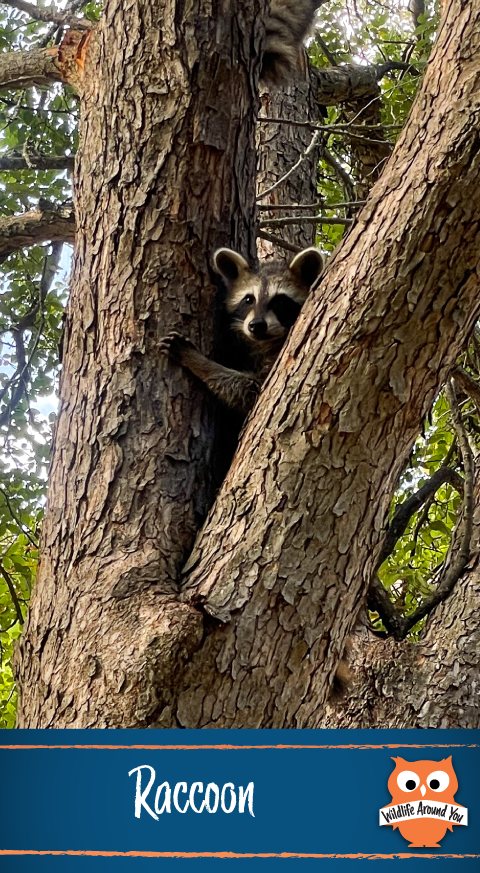Identification
Grayish-brown fur over most of their body, and their tails have four to six black rings.
They have black markings around each eye that can seem like they are wearing a mask. Scientist believe this helps reduce glare similar to when outfielders and football players put black paint under their eyes.
They have whitish patches on top of the eyes and around the nose.
Their forepaws resemble slender human hands with five digits and can often be seen in mud around streams.
They weigh around 13 lbs. and are 2-3 feet in length.
Habitat
Live throughout the continental United States in woods, wetlands, suburbs, parks, cities and anywhere they can find cover, food and water.
They were introduced to Europe in the 1920s for fur farms, and then escaped and expanded from there. In the 1970s Japan even began importing them because children wanted them as pets because of the anime cartoon Rascal the Raccoon.
Behavior
They are nocturnal, but sometimes can be seen during the day, especially if it is cloudy.
They move slowly with a shuffle walk, but can reach speeds of 15 miles per hr on the ground if needed.
They are good swimmers and climbers, and can withstand a drop of 35 ft from a tree.
Among all of their senses, the most developed and most significant sensory faculty of raccoons is touch. They essentially see with their hands.
Offspring
Breeding season is usually from January to June. Females will have one litter a year with 3-7 offspring per litter. Baby raccoons are called kits.
Gestation period is roughly two months and the young will stay with the mother for the first winter and then be on their own the following spring.
They average about 5 years in the wild, but can life up to 16 years.
Predators
Coyote, fishers, bobcats, red fox, and great horned owl.
Diet
They’re omnivores so they eat things like grasshoppers, nuts, berries, mice, squirrels, and bird eggs. They are opportunistic feeders and are well known by people for their skillful attempts at stealing food from garbage cans in parks and neighborhoods.
Fun Facts
The name “raccoon” originates from the word “aroughcun”, a Powhatan term that means “one who scratches with its hands”.
They typically have communal latrines where several individuals will go do their business.
In 1926, US President Calvin Coolidge received a raccoon to be eaten for Thanksgiving. Coolidge refused to have it killed or eaten, however. Instead, they adopted it as a pet raccoon. The Coolidges gave her the name “Rebecca”. For Christmas, Rebecca the raccoon received an embroidered collar with the words “White House Raccoon” engraved on it. She also participated in events such as the White House Easter Egg roll. Near the end of his presidency, Coolidge donated Rebecca to Rock Creek Park in DC.
Female raccoons are called sows while male raccoons are called boars.
In one study, raccoons have demonstrated enough intelligence to open 11 out of of 13 complex locks in less than ten attempts. This study reaffirmed that raccoons’ cerebral cortex can be compared to those of primates.
Wild raccoons routinely carry parasites and diseases, so stay clear of them and keep pets away.
They can make over 50 different noises. They hiss, purr, growl, chirp and squeal.

